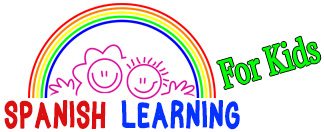"Our Mission is to program success in our children's mentality by speaking the Spanish language"
What Does it Mean to be Bilingual?
Being bilingual means that you can understand and communicate in two languages, as well as express your thoughts clearly in both languages. Being multilingual means, of course, that you can develop those skills in more than two languages.
What are the advantages of being bilingual?
Some studies argue that children exposed to multiple languages are more creative and develop problem-solving skills better. Other studies suggest that speaking a second language, even if only during the first few years of life, helps to program brain circuits to make it easier for the child to learn more languages in the future. The maturity of a bilingual child is faster than a child who speaks only one language.
How can I help my child become bilingual?
There are several methods that can help you make your child bilingual. In all of them, it is very important that children are exposed to both languages in different contexts and that they understand the importance of knowing each one of them.
Two approaches are recommended:
- The “one parent, one language” approach requires that each parent speak a different language at home from the child’s earliest years. For example, the mother could speak to the child only in Spanish while the father could use only English.
- The “minority language at home” method allows parents to establish a use for each language. For example, only Spanish would be spoken at home, while English would be spoken at learning center.
With any of the methods you use, try not to mix the two languages. That is, when speaking with your child in the language of your cultural heritage, do not mix English in sentences or sentences. However, do not be surprised if your child uses words from both languages in one sentence. When this happens, correct it with indifference by providing the appropriate word in the language you are using.
Will bilingualism lead to cultural loss?
You will probably miss some culture and some links if your child grows up in a new country; however, you decide whether you want to inculcate your children their cultural heritage or not.
There is definitely an “American” culture. However, do not forget that for centuries, many of the people who came to the United States in search of a more promising future clung to their native languages and cultures in their homes and neighborhoods; nevertheless, they learned to speak English and to integrate into American life. Such cultural identities still exist in many families after many, many generations. For example, we find an Italian or Chinese neighborhood in almost every major city in the United States. And every year, Mardi Gras, Cinco de Mayo and St. Patrick’s Day are celebrated with equal enthusiasm.
Fluency in a second language can bring great cultural benefits. Children who learn the language of their cultural heritage can communicate with their relatives and strengthen family ties across the border. In addition, they are very likely to want to learn the history and traditions of their family’s home country. Understanding where they come from helps children develop a strong identity and determine where they will be headed in the future.
Does bilingualism delay the development of a child’s speech?
In some cases, learning two languages simultaneously can slow down language development, compared to monolingual children. Linguists claim that bilingual children can reverse the order of words in a sentence, but like children who speak a single language, they will understand what they mean. Likewise, correction must always be subtle so that the child is not inhibited.
Some parents fear that speaking to their children in another language will make it difficult for them to learn English at learning center. The reality is that before they go to learning center, children will have been in constant contact with English thanks to television, radio and friends. Parents are often astonished at their children’s ability to learn English when they play with other English-speaking children in the neighborhood or prelearning center. Once they start going to learning center, they get on the level of their peers quickly. This is when the problem for parents becomes how to prevent their children from speaking only English!
What are some of the challenges?
Maybe some kids are not really keen on the idea of speaking their parents’ language. By nature, children want to be like their peers. For example, if your friends speak only English, they also want to speak only English. Parents who want their children to speak a second language should continue to talk at home, regardless of the resilience they may encounter in their children.
Educate a child to become bilingual
Teaching a second language to a child can be challenging. The reality is that most immigrant families lose their native language in the third generation; but this does not have to be your case.
Ultimately, your child’s fluency in speaking another language will be influenced by many factors, including personal motivation and support from parents. Decide what level your child wants the language of their cultural heritage and then look for appropriate resources, such as books and multimedia material, formal education or temporary immersion. Teaching children to be bilingual can help them recognize the importance of their culture and heritage, as well as develop a strong personal identity and may even be of great use to them when they are older!


